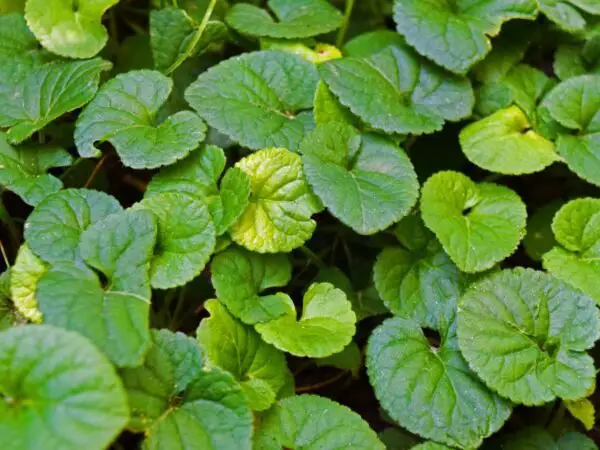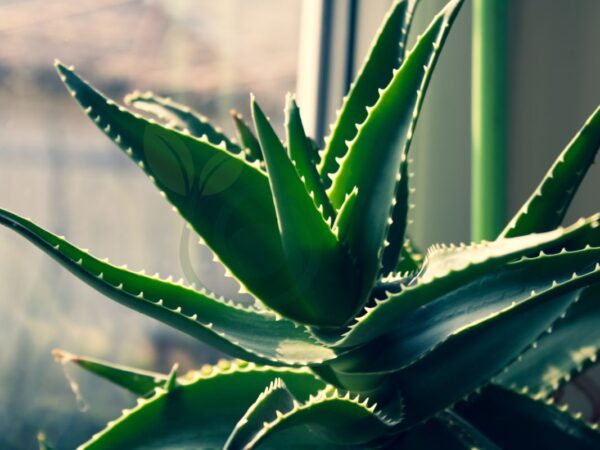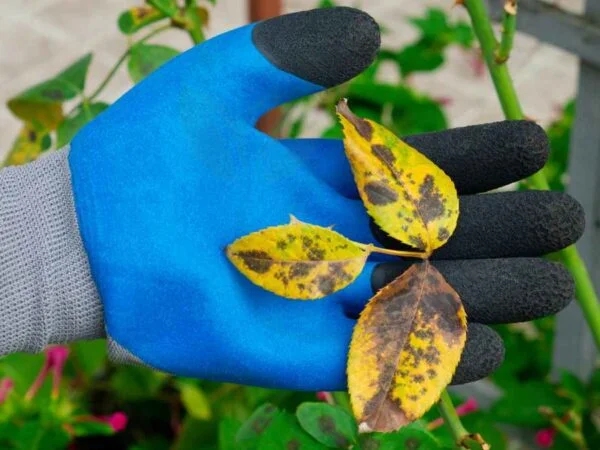Curious about how to plant poplar trees? Whether you're a novice or seasoned gardener, mastering this process can be both rewarding and challenging. From selecting the right location to nurturing your saplings, the journey from seed to tree is filled with contrasts – patience versus urgency, fragility against resilience. Understanding these nuances is key to successfully growing poplars in your garden or backyard. In this guide, we'll delve into the intricacies of planting poplar trees in various soils and zones, offering practical tips for a flourishing arboreal venture.
Key Takeaways
- Planting poplar trees can offer benefits like fast growth, shade provision, and erosion control.
- Understanding the types of poplar trees available can help you choose the right one for your specific needs and environment.
- Proper preparation before planting, including soil testing and selecting a suitable location, is crucial for the successful growth of poplar trees.
- When planting poplar trees, ensure proper spacing, depth, and watering to promote healthy root development and growth.
- To care for poplar trees, focus on regular watering, mulching, and protection from pests and diseases to maintain their health and vigor.
- Be aware of common challenges like pests, diseases, and weak wood, and take preventive measures to address them effectively.
Benefits of Poplar Trees
Fast Growth
Poplar trees are renowned for their rapid growth, making them an excellent choice for quick landscaping. Their superior fast growth rate allows poplar trees to provide shade and privacy in a relatively short time frame. For instance, if you want to create a shaded area in your backyard quickly, planting poplar trees can be a great solution. Moreover, the speedy growth of these trees makes them highly sought-after for reforestation projects aiming to restore forests swiftly.
Poplar trees' ability to grow rapidly is advantageous when you need immediate results in terms of creating shady spots or enhancing greenery around your property. Their quick development contributes significantly to environmental initiatives such as reforestation efforts seeking swift restoration of wooded areas.
Shade Providing
With their dense canopy, poplar trees offer ample shade that can transform outdoor spaces into cool retreats during hot weather. By strategically planting poplar trees around your house, you can benefit from superior natural shading that reduces cooling costs during scorching summer months. Imagine enjoying picnics or outdoor activities under the comforting shade provided by these majestic trees - it creates a serene and pleasant environment for relaxation and recreation.
The shade cast by poplar trees not only enhances the aesthetic appeal of your surroundings but also serves practical purposes like reducing energy consumption by keeping indoor spaces cooler naturally. This dual functionality makes poplar tree plantings an attractive option for homeowners looking to improve both the visual appeal and energy efficiency of their properties.
Windbreaks
Poplar trees are commonly used as windbreaks due to their resilience against strong winds. Planting these tall and sturdy trees along the perimeters of your property acts as a protective barrier shielding gardens or crops from potential wind damage. The dense foliage characteristic of poplars serves as a natural defense system against powerful gusts, mitigating adverse effects on nearby areas caused by turbulent winds.
Utilizing poplar trees as windbreaks offers multiple benefits beyond safeguarding plants; it helps maintain soil health by preventing erosion due to wind exposure while fostering optimal growing conditions for vegetation near windy regions.
Types of Poplar Trees
Hybrid Varieties
Hybrid poplar trees come in various types, each offering distinct advantages. These hybrids are specifically bred to excel in certain areas like disease resistance or rapid growth. By selecting the right hybrid variety, you can ensure your poplar tree meets your specific requirements perfectly.
Hybrid Varieties:
- Bred for specific traits
- Offer improved wood quality
- Tailored to different needs and preferences
Choosing a suitable hybrid poplar ensures you benefit from its unique features and characteristics, whether it's for landscaping or timber production purposes.
Cottonwood Overview
Cottonwood trees are a popular type of poplar known for their fluffy seeds and large heart-shaped leaves. These deciduous giants can reach towering heights of over 100 feet, making them a striking addition to any landscape near water bodies like rivers or wetlands.
Cottonwood Trees:
- Recognizable by cotton-like seeds
- Can grow exceptionally tall
- Native to North America
The majestic presence of cottonwoods near water sources not only enhances the scenery but also provides essential habitats for various wildlife species.
Appearance Specifications
Poplar trees boast an upright growth pattern with straight trunks and wide crowns adorned with branches that spread out gracefully. Their leaves vary among varieties but often feature either triangular or heart shapes with serrated edges.
Poplar Tree Features:
- Tall and upright stature
- Diverse leaf shapes
- Broad crown structure
The bark of poplar trees ranges from smooth and light-colored to rough-textured dark hues depending on the specific species, adding visual interest to these beautiful trees.
Preparing to Plant Poplar Trees
Ideal Locations
Poplar trees are best suited for areas near water bodies like lakes or ponds due to their love for moist environments. They thrive in full sun but can also tolerate some shade. Their adaptability extends to various soil types such as clay, loam, and sandy soils.
When choosing a location for your poplar trees, consider the proximity to water sources and the amount of sunlight the area receives. For example, planting them by a pond where they can access ample moisture would be ideal. Ensure that the soil in the chosen location is suitable for poplar tree growth.
-
Pros:
-
Thrive in moist environments.
-
Adaptable to different soil conditions.
-
Tolerant of varying levels of sunlight exposure.
-
Cons:
-
Require regular access to water.
-
May not thrive well in extremely dry or arid regions.
Hardiness Zones
The ability of poplar trees to grow successfully largely depends on the hardiness zones they are planted in. Different species and hybrids have varying temperature tolerances, so it's crucial to select one that aligns with your local climate conditions.
Before planting poplar trees, reference the USDA hardiness zone map specific to your region. This resource will help you identify which varieties are most suitable based on temperature requirements and climatic conditions prevalent in your area.
- Consulting hardiness zone maps helps determine appropriate tree varieties.
- Understanding temperature tolerances aids in selecting optimal species/hybrids.
Planting Poplar Trees
Step-by-Step Guide
When planting poplar trees, it is crucial to dig holes that are wider rather than deeper. Digging two to three times wider than the root ball helps loosen the soil, allowing roots to spread easily. However, avoid digging too deep as it can cause poor drainage and suffocate the roots.
Ensuring the proper planting depth for poplar trees is essential. The root collar should be level with or slightly above the soil surface. Planting too deep can hinder growth and lead to root suffocation. Correct planting depth promotes healthy root development and overall tree vigor.
- Dig wide holes
- Avoid excessive depth
- Promote healthy root development
Proper spacing between poplar trees is vital for their growth. Consider both height and crown spread when determining spacing requirements based on the variety chosen. Adequate space allows each tree room to grow without overcrowding, ensuring optimal growth conditions.
Newly planted poplar trees require regular watering to establish their roots effectively. Water deeply and thoroughly, keeping the soil around their roots evenly moist but not waterlogged initially. Once established, poplars are generally drought-tolerant but may need supplemental watering during extended dry periods.
- Ensure correct hole size
- Maintain appropriate planting depth
- Provide adequate spacing
Poplar Tree Care Tips
Sun and Shade
Poplar trees thrive in full sun, needing ample sunlight for robust growth. While they can tolerate some shade, it may slow down their development and result in sparse foliage. When planting poplar trees, ensure they are placed in a sunny spot to foster vigorous growth and lush canopies.
For optimal health, poplar trees should be exposed to full sun. Inadequate sunlight might lead to stunted growth and less dense leaves. By choosing a location with plenty of sunshine for your poplar tree, you guarantee its vitality.
Fertilizing
When planted in nutrient-rich soil, poplar trees usually do not demand heavy fertilization. However, providing them with a balanced slow-release fertilizer during early spring can enhance their nutrient intake for ideal development. Be cautious not to over-fertilize as excessive nitrogen can weaken the wood and make the tree more prone to pests or diseases.
To maintain the health of your poplar tree, consider using a slow-release fertilizer during springtime. This will supply essential nutrients without overwhelming the tree's system.
Pruning
Prune your poplar trees when they are dormant - typically late winter or early spring - to encourage healthy growth patterns and shape the structure of the tree. Eliminate any dead or damaged branches along with those that cross each other; this aids air circulation and reduces disease risks. Avoid extensive pruning during active growth periods as it may stress the tree out and impede its progress.
During dormancy periods like late winter or early spring is an excellent time to prune your poplar tree safely without hindering its future development potential.
Common Challenges
Pests and Problems
Poplar trees are usually tough against many pests and diseases, but they can still face issues. Aphids, caterpillars, leaf spot diseases, or canker diseases might affect them. Regular checks and quick action can help manage these problems effectively.
Keeping an eye on your poplar trees is crucial to catch any signs of trouble early on. Preventive measures like regular inspections and timely treatments can go a long way in keeping these pests at bay. For instance, applying insecticidal soap for aphids or pruning affected branches can help maintain tree health.
-
Pros:
-
Poplar trees are generally resistant to most pests.
-
Early intervention helps prevent severe damage.
-
Cons:
-
Neglecting monitoring may lead to significant pest infestations.
-
Some treatments may require professional assistance.
Growth Rate Management
Poplar trees boast a rapid growth rate that demands consistent attention for size control. To keep them in check, regular maintenance practices such as pruning or trimming are essential. These activities not only manage excessive growth but also ensure the tree's shape fits its surroundings.
Managing the growth rate of poplar trees is vital to prevent them from outgrowing their designated space. By conducting routine maintenance tasks like shaping the canopy or thinning out crowded areas, you promote healthy growth patterns while maintaining an attractive appearance.
- Key Information:
- Pruning helps regulate size and shape.
- Regular maintenance prevents overgrowth near structures or utilities.
Watering and Growth Rate
Ensure you water deeply once or twice a week during the first growing season. As the tree establishes itself, reduce watering frequency gradually but increase the amount of water each time. Remember to adjust your watering schedule based on local weather conditions and soil moisture levels.
Poplar trees are renowned for their rapid growth, often soaring 5 to 8 feet per year under ideal circumstances. However, this growth rate can fluctuate based on various factors like species, hybrid variety, climate conditions, and soil fertility levels. With proper care and favorable conditions in place, poplar trees can swiftly establish themselves in your landscape.
Pruning and Maintenance
Pruning Techniques
To properly care for poplar trees, it's essential to use sharp pruning tools for clean cuts. When pruning, focus on removing any suckers or water sprouts that appear at the tree's base or along the trunk. Remember to shape the tree following its natural branching patterns while avoiding excessive pruning that could harm its strength.
When you prune a poplar tree, think of it as giving your tree a haircut. Just like when you trim your hair to keep it healthy and looking good, pruning helps maintain the health and appearance of your poplar tree. By following these techniques, you're assisting in promoting healthy growth and preventing potential issues down the line.
Seasonal Care
Throughout different seasons, there are specific care requirements for poplar trees. In spring, keep an eye out for new growth on your trees and promptly address any pest infestations or diseases that may arise during this period. As summer rolls around, make sure your poplar trees are getting enough water, especially in hot and dry weather conditions.
Think of seasonal care as adjusting how much sunscreen you apply based on whether it's summer or winter; just like our skin needs different levels of protection throughout the year, so do poplar trees! During fall months, take some time to clear fallen leaves and debris around your poplars; this simple task can help prevent diseases from spreading among your precious plants.
Hybrid Poplar Trees Overview
Superior Hybrids
When planting poplar trees, opt for superior hybrid varieties tailored for specific traits like disease resistance or fast growth. These hybrids are specially bred to exhibit improved characteristics compared to wild poplars. Consult local nurseries or arborists for advice on selecting the best hybrid options suitable for your needs. For instance, if you want a poplar tree that grows rapidly and is resistant to common diseases, consider planting a hybrid variety known for these qualities.
You've now learned about the benefits of planting poplar trees, the different types available, how to prepare for planting, the actual planting process, care tips, common challenges you might face, watering needs, growth rates, pruning techniques, and overall maintenance. By understanding these aspects, you're equipped to successfully nurture your poplar trees and enjoy their beauty and advantages.
Now it's time to get your hands dirty and start planting those poplar trees! Remember the tips and tricks you've picked up along the way, stay dedicated to their care, and watch as your poplar trees flourish. Happy planting!
Frequently Asked Questions
How can planting poplar trees benefit the environment?
Poplar trees offer various environmental benefits, such as absorbing carbon dioxide, providing shade to reduce energy consumption, and enhancing biodiversity by creating habitats for wildlife.
What are some common challenges when planting poplar trees?
Common challenges include susceptibility to diseases like fungal infections, issues with pests such as aphids or caterpillars, and potential damage from strong winds due to their fast growth.
Is pruning necessary for poplar trees?
Pruning is essential for maintaining the health and shape of poplar trees. Regular pruning helps remove dead or diseased branches, promotes proper growth patterns, and improves overall tree aesthetics.
How often should I water my newly planted poplar tree?
For newly planted poplar trees, it's crucial to keep the soil consistently moist but not waterlogged. Water deeply once a week during dry periods in the first year after planting to help establish a healthy root system.
Are hybrid poplar trees a good choice for landscaping?
Hybrid poplar trees are an excellent choice for landscaping due to their rapid growth rate, disease resistance properties inherited from parent species, and versatility in various soil conditions. They provide quick privacy screens or windbreaks in landscapes.
Image Source: Paid image from CANVA





